
The Major Scale Formula Free Guitar Lessons
The formula for constructing a major scale is: Whole Step (W) Whole Step (W) Half Step (H) Whole Step (W) Whole Step (W) Whole Step (W) Half Step (H) Let's break this down further: Start on a note (the tonic). Move up a whole step (two half steps) to the second note. Move up another whole step to the third note.
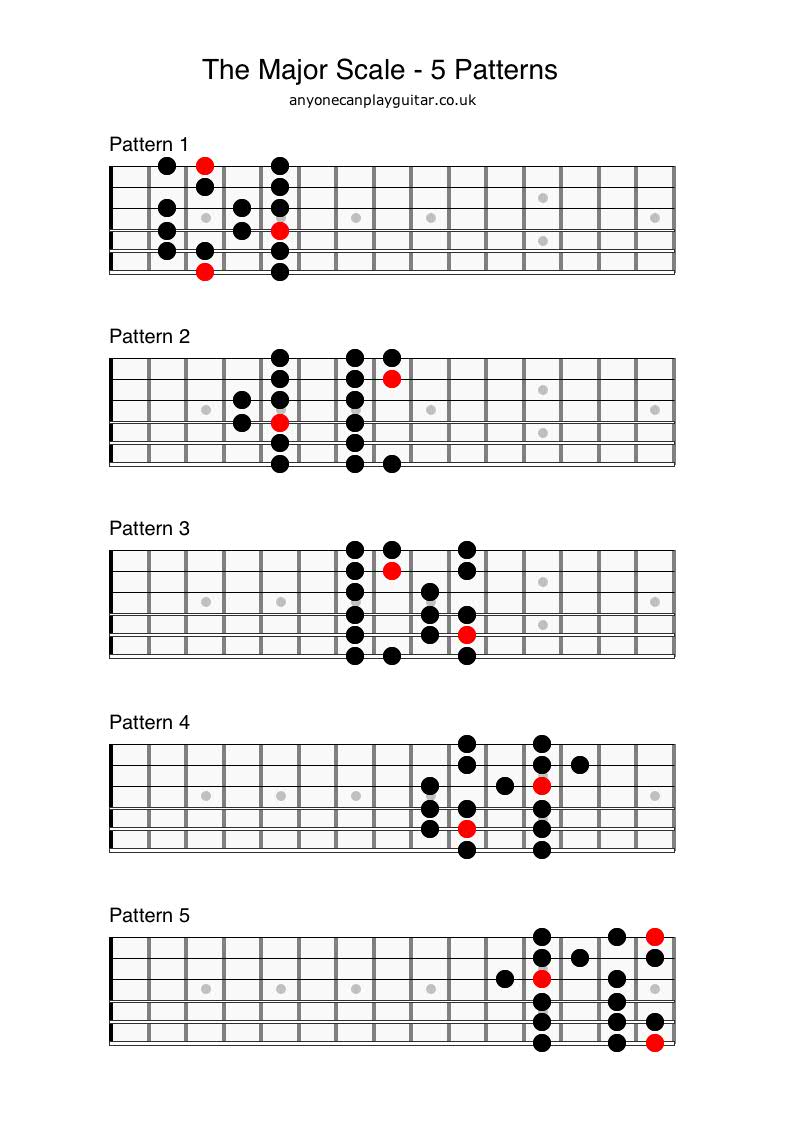
Learn scales on guitar Major scales on Guitar
A half step from E is F. A whole step from F is G. A whole step from G is A. A whole step from A is B. A half step from B is C, back to the top. So, the C major scale ends up looking like this: Writing Major Scales in Any Key The above 'major scale formula' is all you need to write a major scale in any key.
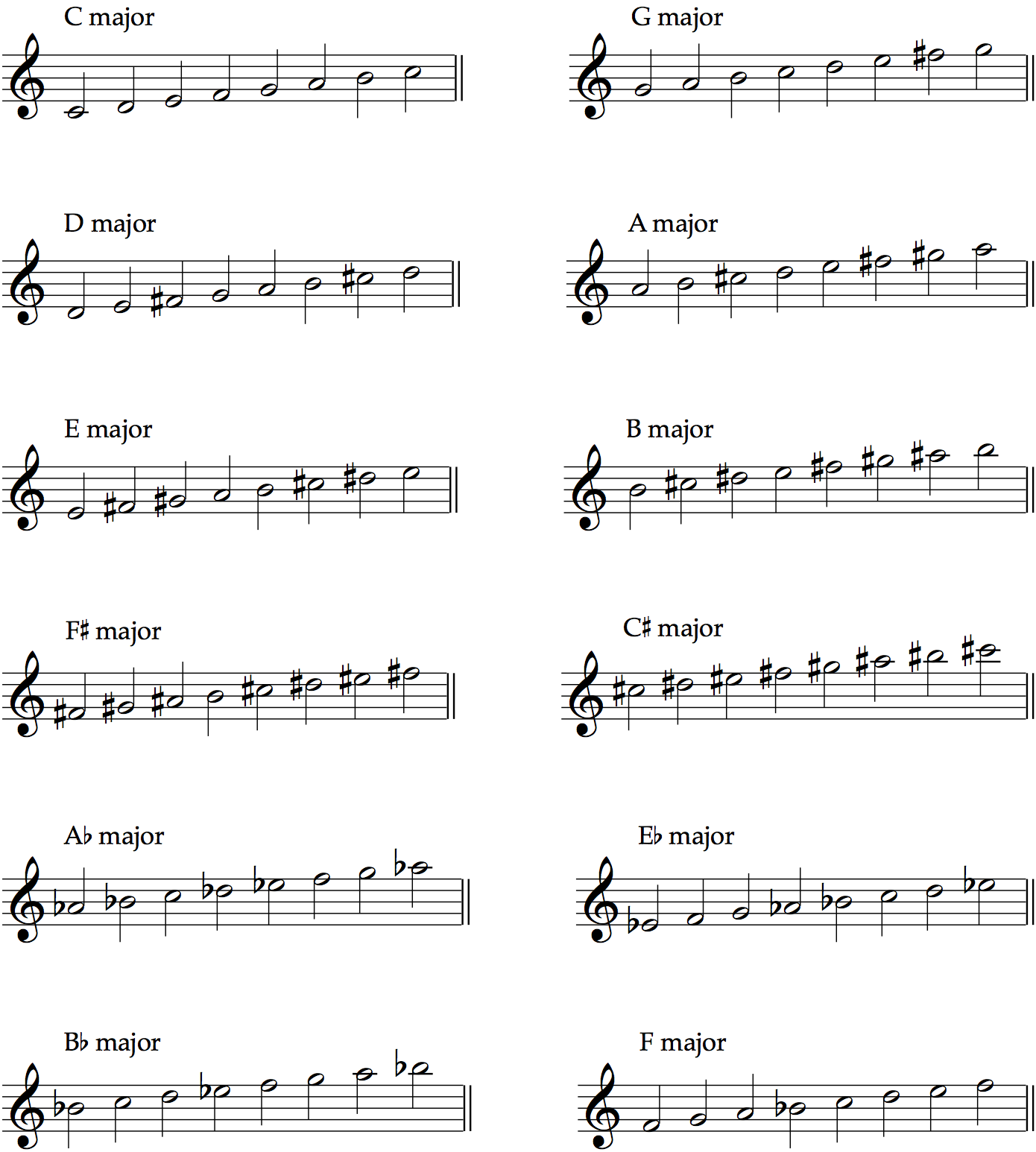
How many major scales are there and why? school of composition (2023)
The pattern of whole and half steps characteristic of a major scale The intervals from the tonic (keynote) in an upward direction to the second, to the third, to the sixth, and to the seventh scale degrees of a major scale are called major. [1] A major scale is a diatonic scale. The sequence of intervals between the notes of a major scale is:
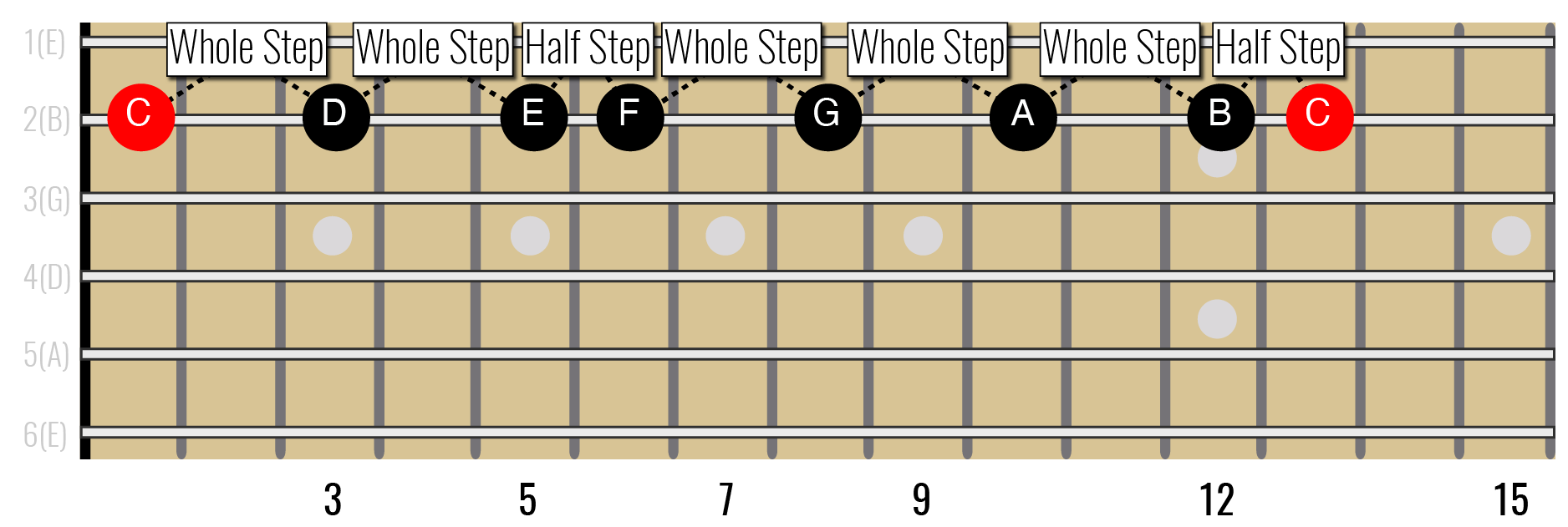
The Major Scale on Guitar — Guitar Music Theory Lessons by Ry Naylor
The Eb (flat) major scale starts and ends with the note Eb. Constructing this type of scale is rather simple if we employ a simple formula. This formula has to do with the distance (intervals) between the notes. Below is the formula we use to construct these scales using Whole Steps (W) and Half Steps (H). W W H W W W H.
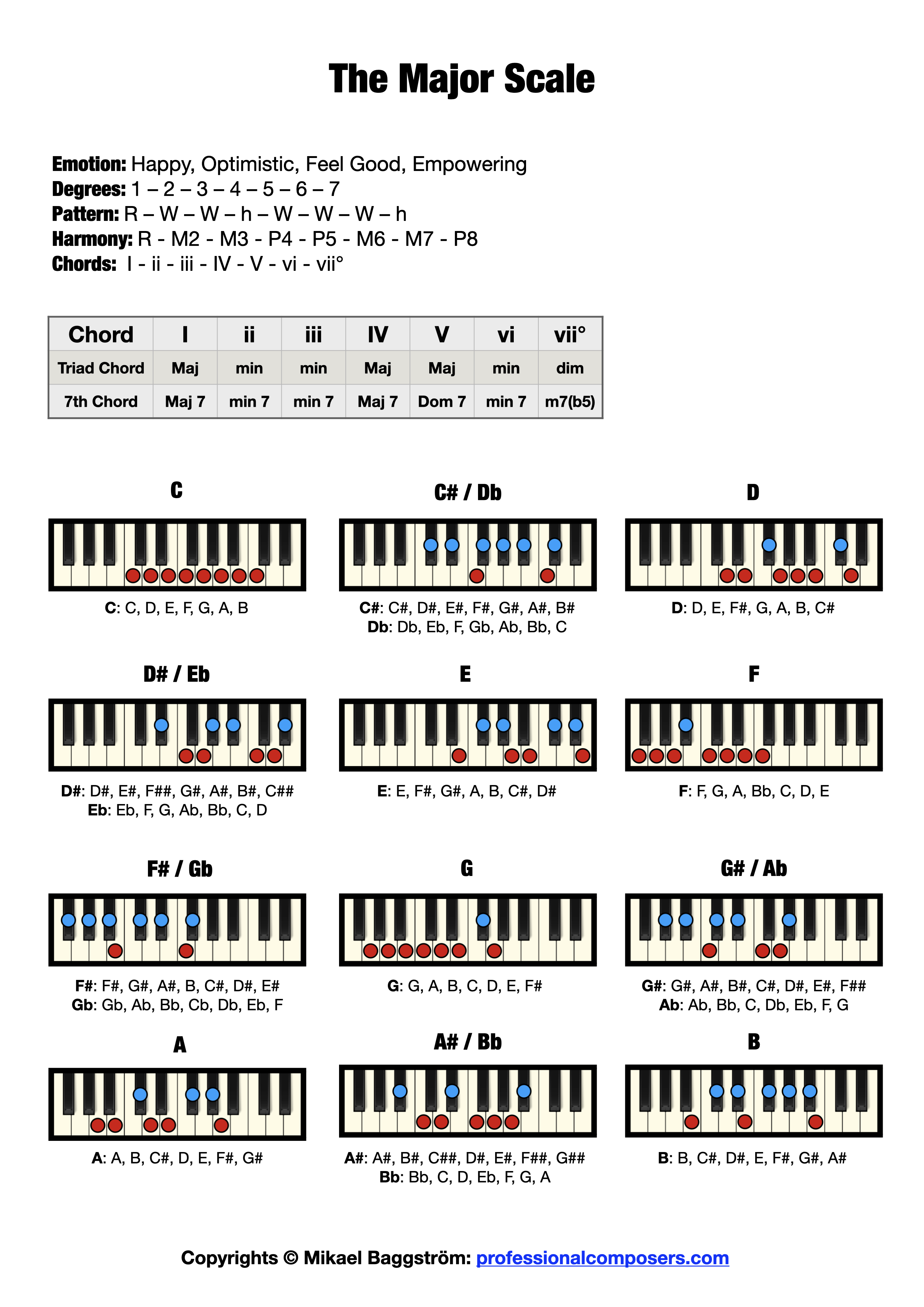
The Major Scale on Piano (Free Chart + Pictures) Professional Composers
This formula uses a combination of whole-steps and half-steps to leave out 5 of the 12 notes. The remaining 7 notes are your major scale. The note you begin on gives the scale its name. For example, applying the Major Scale Formula and starting on a C note will give you a C major scale. Similarly, starting on an Ab note will give you an Ab.

The Major Scale Major Mojo torr71 GuitarZan
Also known as the major scale, the Ionian mode is of course a major sounding scale. This is because of the major third. The formula is 1, 2, 3, 4, 5, 6, 7, before starting over with the root note 8 an octave higher than the root note. How to Construct the Major Scale Use 1/2 steps and whole steps to build or construct the major scale.
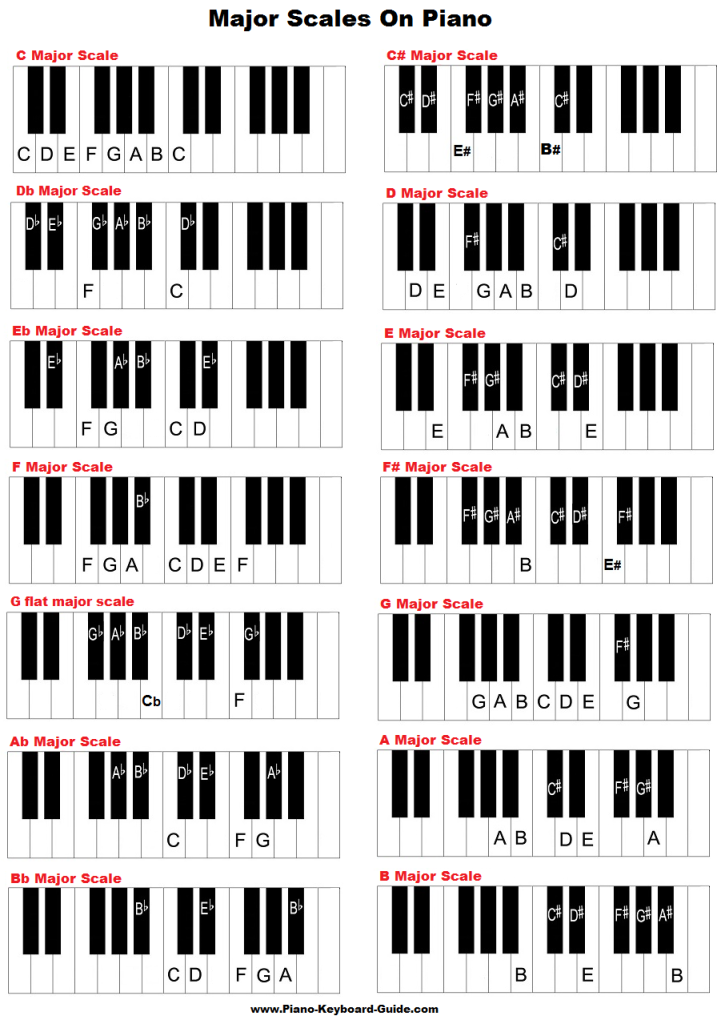
All Major Scale Saxophone , Flute , and Ukulele Class in Saigon
Like every major scale, A major follows a certain formula of whole and half steps which is: Whole step, whole step, half step, whole step, whole step, whole step, half step. This is abbreviated to W W H W W W H. A Major Scale With Whole and Half Steps Using the British terminology of tones and semitones, this would be:

Major Scale Formula Music Theory on the Piano YouTube
The other major scales. With our formula (WWHWWWH), you can now find out yourself the other major scales. Since there are 12 different notes, that means that there are also 12 major scales. When you do the scales in the order as listed below, you will see that each time you will get one more sharp in the scale. Starting from the C major scale.

Formula to make the Major Scale on piano. Pick a random note, apply the
The secret formula for a major scale is: T-T-S-T-T-T-S T=Tone (whole-tone) S=Semi-tone (half-tone) Major scale pattern: 2 Types of major scales Major scales with flats (b) All music scales that has the term "flat ( b )" in its name is a major scale with flat.

Understanding The Major Scale Beginner Guitar Theory Lesson
What Is The Formula For A Major Scale? Easy Breakdown 8 min read In this brief introduction, we will explore the concept of a scale and delve into the formula for a major scale - One of the most fundamental scales in Western Music. The major scale is a seven-note scale widely used in various genres of music, from classical to pop, jazz to rock.

The Allimportant Major scale Open D Tuning
Major Scale: Mathematically the major scale is produced using the following formula. 1 - 2 - 3 - 4 - 5 - 6 - 7 - 8 S - W - W - H - W - W - W - H C - D - E - F - G - A - B - C Very similar construction is used to develop the other scales mentioned above. There is a specific way that the Music Learning Workshop uses to teach scales.
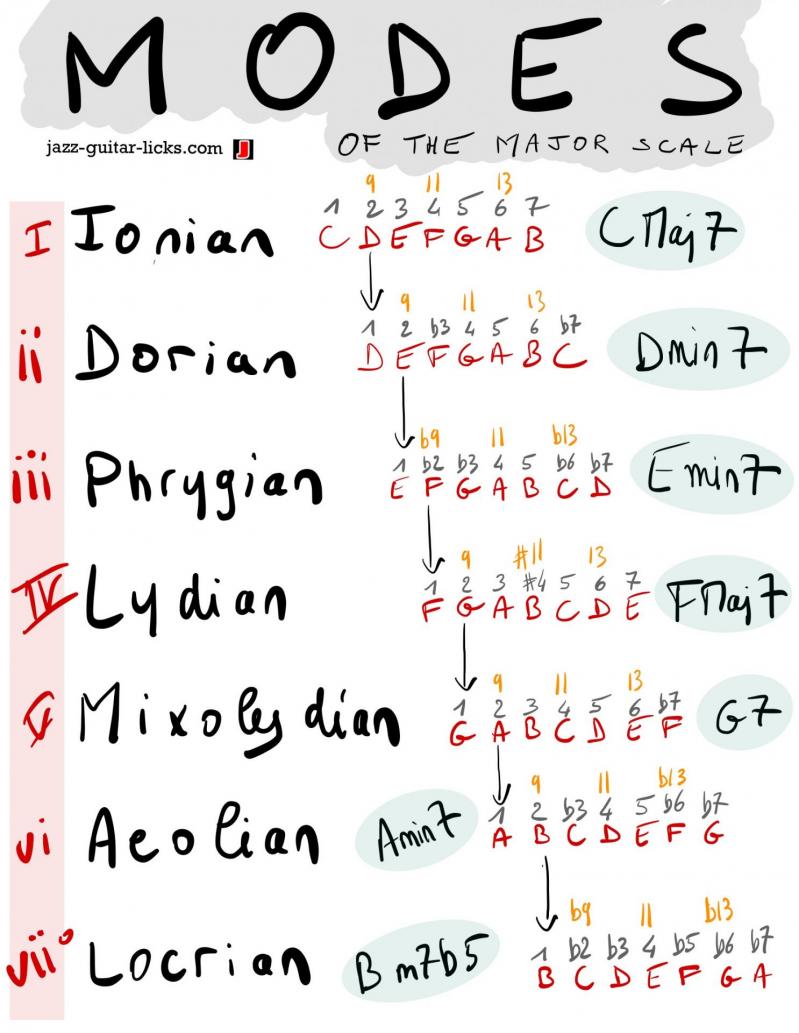
Modes of The Major Scale Music Theory
Scales and Keys. Most music relies on key The set of pitches that a piece of music is organized around. A key has two components: a tonal center and some sort of scale, or set of pitches used for creating harmony and melody., a choice to use a pattern of seven notes forming a set called the major scale.The major scale is a series of 7 notes that are a subset of the 12 notes in the chromatic.

The Major Scale The Most Important Guitar Scale to Learn
To make a major scale, we just have to follow a very simple formula of semitones and tones (whole steps and half steps) between each note. That formula is: T - T - S - T - T - T - S Or in whole and half steps, a major scale would be this formula: W - W - H - W - W - W - H

The Major Scale Formula Free Guitar Lessons YouTube
The Major Scale A scale is a selection of certain notes within an octave. The first scale that we will discuss is the major scale. The major scale is constructed with this formula. W's represent whole steps and h's represent half steps. Let's build a C Major Scale. Our starting note will be C. From the C, we will take a whole step to D.

Piano Scales How To Form Major Scales On Piano YouTube
Music Theory The Formula To Major & Minor Scales by Benjamin November 30, 2020 Major and Minor scales are the two most commonly used scales in music today. In Music Theory, there is a formula to instantly figure out the notes in any major or minor scale. It will allow you to create musically correct chords, melodies and harmonies.
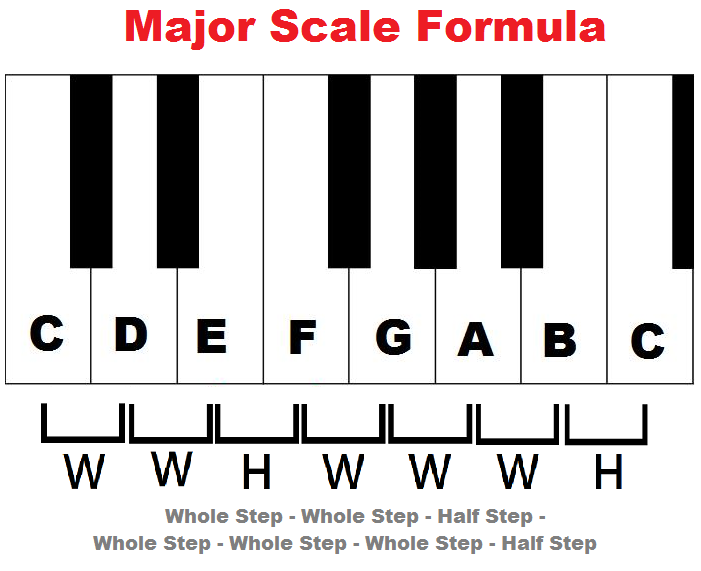
Why Scales Are Important, and How To Build a Major Scale
The Major Scale The major scale consists of 7 notes and an octave note (the root note played an octave higher/lower). If we take a look at the G major scale, its notes are as follows: Listen to the audio to hear how the G major scale sounds: Major Scale Pattern of Steps